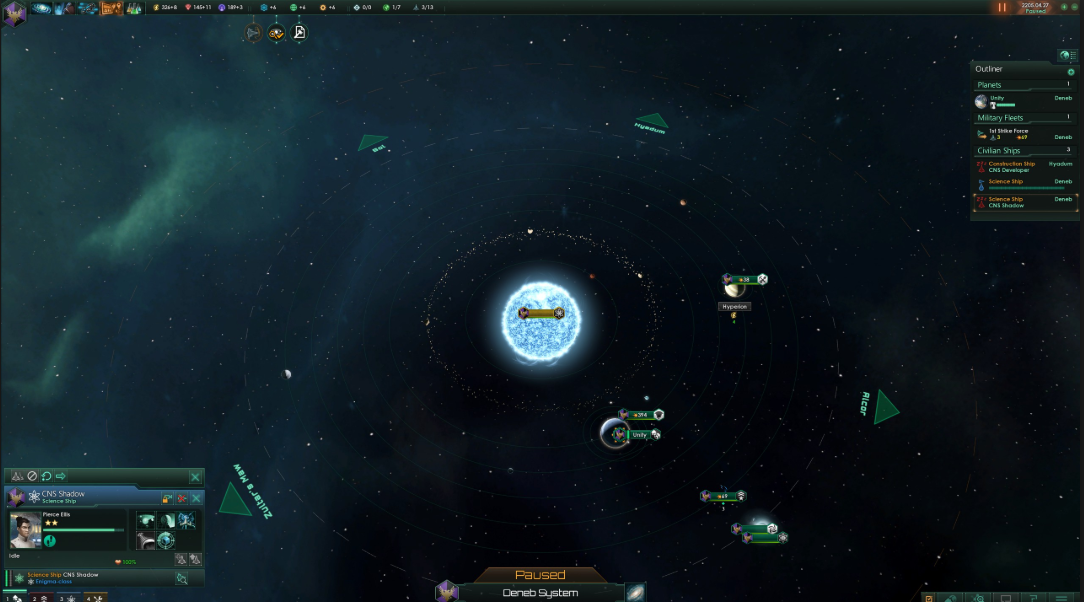1 hour ago, suliman said:
Having them static makes pathfinding a lot easier 
It depends. Stellaris an other games do travelling completely wrong (at least from physics point of view). If you'd start moving planets around the star you would need to introduce physics - the concepts of gravitational based motion for planetary bodies.
Side off topic note: This would actually make your star systems generator and galaxy generator a lot better, and not just randomly generated systems that doesn't really make much sense at all (like in Stellaris case). Downside would be that you could actually end up with real sized star systems and galaxies - not many people realize how BIG is the universe, for that I'd recommend visiting this size-aware map of Solar system http://joshworth.com/dev/pixelspace/pixelspace_solarsystem.html
Path finding and generally gameplay would be tricky - as the transfers between planets are known as 'Hohmann transfers' - you basically accelerate in direction of planet velocity around the star if you want to travel further from star, or against it if you want to get closer to the star. This can take huge amounts of energy or huge amounts of time (depending on what are the phasing angles of both planets). Introducing this would add a gameplay feature, yet it definitely would be confusing for players who have no idea how orbital mechanics work.
A typical example that could teach you how it is done is Kerbal Space Program - and along with that - what should be the audience for your game? If those people are sci-fi and space enthusiasts it may as well be a good concept to throw in, and it will force you to think in regards to how orbital mechanics work - but certain group of 4X players certainly don't care about the concept and will not learn about it (for them the game will seem way too complex). Kerbal Space Program did this quite right - it focused on specific audience that was extremely interested in such concepts.












